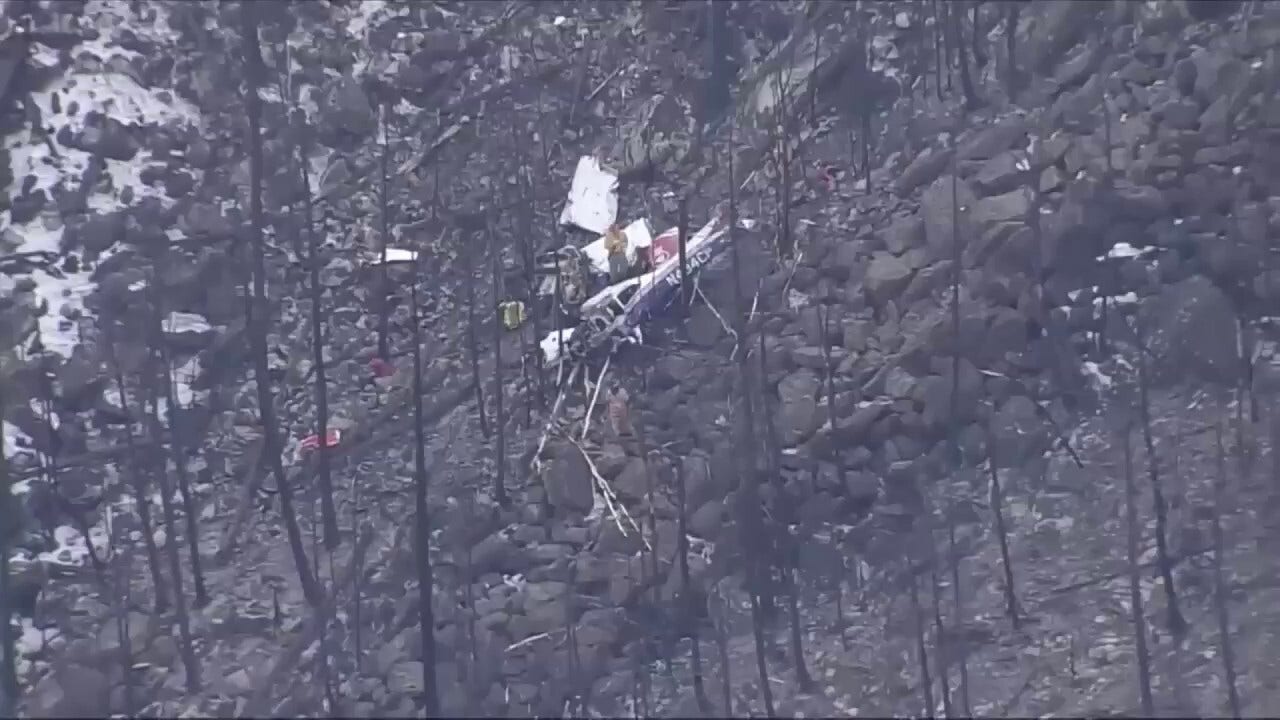Across Atlantic Ice | 6:20 | Smithsonian's National Museum of Natural History
27.2K subscribers | 47,690 views | March 1, 2013
| --> YouTube-Generated Transcript <-- | ||
| 0:04 | · | [Music] |
| 0:15 | · | what what scientists and people think |
| 0:17 | · | about the first Americans is that they |
| 0:19 | · | were uh people who came from Asia they |
| 0:22 | · | came into Alaska across the bearing land |
| 0:25 | · | bridge during the last ice age the |
| 0:27 | · | earliest people were clov people in they |
| 0:30 | · | made a very distinctive type of uh |
| 0:32 | · | artifact we call a clovis projectile |
| 0:35 | · | point and uh we presume that their |
| 0:38 | · | ancestors would have made something very |
| 0:40 | · | similar clois people used the bifacial |
| 0:42 | · | technology uh which is an artifact |
| 0:45 | · | that's flaked on both sides un like an |
| 0:48 | · | arrowhead but very distinctive with |
| 0:50 | · | flutes on the bases we find them from |
| 0:52 | · | coast to coast uh here in North America |
| 0:54 | · | and from uh Southern Alberta down into |
| 0:57 | · | uh Venezuela so we expect Ed to find |
| 1:00 | · | them in Alaska and Siberia but in all |
| 1:02 | · | the work we did up there and never found |
| 1:05 | · | anything similar in fact the technology |
| 1:07 | · | and Northeast Asia is one where they use |
| 1:10 | · | tiny micro blades that are inset into |
| 1:13 | · | bone and ivory projectile points and |
| 1:15 | · | knives totally different |
| 1:17 | · | philosophy we went to look at a site |
| 1:19 | · | discovered near Cactus Hill Virginia and |
| 1:22 | · | the site had a clovis occupation and it |
| 1:25 | · | had another occupation below clo that |
| 1:27 | · | dated maybe uh 4,000 years older than |
| 1:30 | · | Clovis and they had projectile points |
| 1:33 | · | similar to Clovis but they were not |
| 1:35 | · | fluted and I said oh this is what we're |
| 1:37 | · | looking for this is the ancestor of |
| 1:39 | · | Clovis we realized almost immediately we |
| 1:42 | · | were looking in the wrong direction and |
| 1:45 | · | our ancestors to Clovis were here on the |
| 1:47 | · | on the east coast of North America where |
| 1:49 | · | did they come from they certainly didn't |
| 1:51 | · | come from Siberia the cutan technology |
| 1:54 | · | in Southwestern Europe looks uh very |
| 1:57 | · | similar to Cactus Hill it is a bit older |
| 1:59 | · | but but uh it's clear there's a |
| 2:02 | · | technological relationship they're |
| 2:04 | · | making their stone tools the same way if |
| 2:06 | · | there had been a Crossing from Europe to |
| 2:09 | · | North America that would explain the |
| 2:11 | · | evidence uh that we're finding uh at |
| 2:14 | · | Cactus Hill and how it relates to the |
| 2:17 | · | saluton I know that uh boats have been |
| 2:20 | · | known uh for at least 40 to maybe 60,000 |
| 2:23 | · | years and with the uh drop in sea level |
| 2:27 | · | of 250 ft or so during the last ice age |
| 2:31 | · | and the fact that Europe was connected |
| 2:33 | · | to North America uh by an ice Bridge |
| 2:38 | · | basically and people with boats could be |
| 2:40 | · | hunting uh for sea mammals along that |
| 2:44 | · | ice Edge uh and do quite well so what |
| 2:48 | · | we've been doing is looking for more |
| 2:50 | · | sites and uh we're finding many sites in |
| 2:53 | · | the chesap region that are supporting |
| 2:56 | · | that hypothesis 20,000 years ago the |
| 2:58 | · | Chesapeake Bay did didn't exist it was |
| 3:01 | · | the Susana River and the Susana River |
| 3:03 | · | drained across 50 Mi of continental |
| 3:06 | · | shelf before it emptied into the Ice Age |
| 3:09 | · | Atlantic Ocean well the biggest problem |
| 3:11 | · | then is the fact that where the earliest |
| 3:13 | · | people landed and and started to live is |
| 3:16 | · | now 250 ft |
| 3:18 | · | underwater and uh it's really difficult |
| 3:21 | · | to find those sites when uh dredging the |
| 3:24 | · | continental shelf occasionally uh some |
| 3:27 | · | of these artifacts have been found and |
| 3:30 | · | in particular uh one found right on the |
| 3:32 | · | edge of the continental shelf was a |
| 3:34 | · | Mastadon skull and Mastadon remains and |
| 3:38 | · | associated with them was a a very nice |
| 3:42 | · | bifacial knife uh that's similar uh to |
| 3:46 | · | the ones from Europe and uh radiocarbon |
| 3:49 | · | dating the the Mastadon skull gave us a |
| 3:52 | · | date of 22,000 which is just about |
| 3:55 | · | perfect for one the sea level and two |
| 3:58 | · | the timing the people coming across the |
| 4:01 | · | ice from |
| 4:03 | · | Europe there's a type uh DNA known as |
| 4:07 | · | mitocondrial DNA and uh everybody in the |
| 4:10 | · | world is in somehow or other related to |
| 4:13 | · | the different types of mitochondrial DNA |
| 4:15 | · | North American Indians have about four |
| 4:18 | · | major uh DNA mitochondrial DNA lineages |
| 4:22 | · | known as AB C and D then there's some |
| 4:25 | · | minor input one of which is X and X |
| 4:30 | · | doesn't occur in uh Eastern Asia where |
| 4:35 | · | we see a lot of X is in North |
| 4:38 | · | Africa up through Spain and even in |
| 4:41 | · | Europe what's really interesting is |
| 4:43 | · | there's a difference between the uh |
| 4:47 | · | mitochondrial X in North America and |
| 4:49 | · | that of uh Europe the |
| 4:51 | · | x2 in North America is |
| 4:55 | · | x2a and uh |
| 4:58 | · | x2a is a result of a mutation that took |
| 5:02 | · | place in the last 20,000 years so |
| 5:05 | · | there's a slight difference between the |
| 5:06 | · | two beginning to look like solutran |
| 5:09 | · | people came from North Africa into |
| 5:13 | · | Europe and 23,000 years ago moved into |
| 5:17 | · | eastern North America that's what the |
| 5:19 | · | genetic data is telling us well this |
| 5:22 | · | discovery is really significant because |
| 5:24 | · | it changes our whole uh view of the |
| 5:28 | · | first Americans uh it pushes it back |
| 5:31 | · | 10,000 or more years before we thought |
| 5:33 | · | people were even here and it indicates |
| 5:36 | · | that they're probably coming from |
| 5:37 | · | multiple directions first from Europe |
| 5:40 | · | and then much later at the end of the |
| 5:42 | · | Ice Age from Siberia and it's beginning |
| 5:45 | · | to give us a really nice picture of the |
| 5:49 | · | mixing bowl that America has always been |
| 5:54 | · | [Music] |
| 5:59 | · | he |

 By Free Republic | Created at 2024-11-23 21:53:57 | Updated at 2024-11-24 01:10:54
3 hours ago
By Free Republic | Created at 2024-11-23 21:53:57 | Updated at 2024-11-24 01:10:54
3 hours ago








